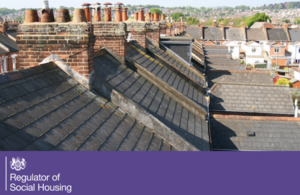RSH sets out key damp and mould findings for social landlords
The report highlights the features of the strongest and weakest approaches to tackling damp and mould, so landlords can learn lessons from others in the sector.

Today the regulator of social housing has published a report setting out how social landlords are approaching the tackling of damp and mould in their tenants’ homes. The report highlights the features of the strongest and weakest approaches, so that landlords can learn lessons from others in the sector.
The findings are drawn from responses that RSH requested from landlords following the coroner’s report into the tragic death of Awaab Ishak in Rochdale. The regulator expects all social landlords to read the report and use it to inform their approach.
The key findings are:
-
Better performing landlords manage their data well. They have accurate and up-to-date information about tenants’ homes, and they use it to find and resolve problems proactively.
-
Strong oversight from boards or councillors is essential. They should gain assurance that landlord management teams are responding effectively when tenants raise concerns.
-
Some boards and councillors had limited oversight of the condition of tenants’ homes, and in some cases they didn’t have specific processes for identifying and tackling damp and mould.
The responses show that most social landlords deal with damp and mould effectively, and most tenants live in homes that are largely free from damp and mould. A small number of landlords gave weaker responses, and the regulator has followed up to scrutinise their approach.
The regulator is gearing up for stronger consumer regulation, which will include regular inspections of all larger social landlords from April 2024. This stronger approach is being introduced via the Social Housing (Regulation) Bill, which has nearly finished its journey through Parliament.
Fiona MacGregor, chief executive of RSH, said:
Tenants deserve to live in homes that are safe, of a decent standard, and free from serious hazards including damp and mould. We expect all landlords to read our report carefully and ask themselves challenging questions about how they could improve their approach.
Notes to editors
-
RSH wrote to registered providers of social housing on 22 November 2022, asking them to provide information and evidence on their approach to assessing the extent of damp and mould issues in their tenants’ homes. The regulator published its initial findings on 2 February 2023.
-
The Social Housing (Regulation) Bill which is currently in Parliament, will give the regulator new and stronger powers to proactively assess social landlords against the consumer standards. Reshaping consumer regulation: our implementation plan provides more information about RSH’s work to deliver proactive consumer regulation.
-
RSH promotes a viable, efficient and well-governed social housing sector able to deliver and maintain homes of appropriate quality that meet a range of needs. It does this by undertaking robust economic regulation focusing on governance, financial viability and value for money that maintains lender confidence and protects the taxpayer. It also sets consumer standards and may take action if these standards are breached and there is a significant risk of serious detriment to tenants or potential tenants.
-
For press office contact details, see our Media enquiries page. For general queries, please email enquiries@rsh.gov.uk or call 0300 124 5225.